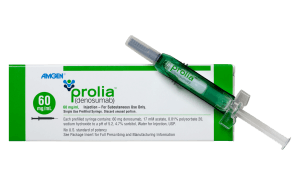A revolutionary and innovative solution to promote hair regrowth and fight baldness!
According to the American Academy of Dermatology, on average, a person loses between 50 and 100 hairs a day. When a person sheds significantly more hair daily, this can be regarded as suffering from the medical condition known as telogen effluvium (excessive hair shedding).
As people age, hair begins to fall out faster than it is being replaced. Blondes typically have more hair follicles on their heads (around 140,000) than redheads, who have about 90,000. Black and brown-headed people have somewhere between these two.
About Phyllotex

Phyllotex is an innovative solution for hair loss and regrowth. Very recently, after years of research and clinical trials, the Phyllotex nutritional supplement was patented and became a brand in the US, thanks to its high efficiency and being completely healthy.
Following a scientific study recently conducted, the following results were observed.
- Between 6-8 weeks into the study, all participants who first reported excess hair shedding reported it as having stopped.
- Subsequently, they reported faster growth of thicker and longer hair, so the scalp looks fuller.
The product is natural, vegetarian, without side effects and intended for both women and men.
How Phyllotex Works
Dosage
The nutritional supplement should be taken twice a day – once in the morning and once at night, with a glass of water and after eating.
Each jar contains 60 capsules, which are enough for one month’s treatment. It is recommended to take the supplement for at least 3-6 months in a row for optimal results. (https://www.creativesystems.com)
Most hair transplanters in the USA recommend their clients take Phyllotex both before and after transplants, or PRP/IPRF treatments.
Phyllotex is not recommended for people suffering from high blood pressure or heart disease without consulting with your cardiac physician.
FAQ
How does hair loss occur?
Understanding the normal mechanism of the scalp hair growth cycle is essential. About 90% of head hairs grow continuously for between two and six years, at an average of 1 cm per month. At the end of the growth phase, the remaining 10% of head hairs are in a “resting” phase for two to three months, after which they fall out, and in their place, new and healthy hairs begin to grow.
How is hair loss diagnosed?
Hair loss can only be considered a problem when thin areas of hair begin to form on the head. Most often, a person notices the phenomenon of hair loss while showering or while combing, since these actions cause “pressure” on the hair and cause it to fall out. However, this is not always an indication of pathological shedding. One of the tests that can be performed to check if there is significant hair loss is the “hair pulling test”: pulling a group of hairs with three fingers. If more than 4-5 hairs are found between the fingers, it is probably a case of clinical hair loss. Another test can be done by looking at the bed pillow in the morning when you wake up. If there are more than eight hairs on the pillow after sleeping, this is also significant hair loss.
There is also a difference between hair loss in men and women.
Causes of hair loss in women
Hair loss in women can be due to the following:
- Hormonal changes – these duplicate those in men, although in women, hair loss tends to be more scattered and usually does not lead to a complete loss of scalp hair
- Weather changes – noticeable especially in autumn and winter
- Birth control pills, which can sometimes also cause hair loss (even when you stop taking them)
- Post-childbirth stress, including new baby care
Other causes shared by both men and women
- Chemotherapy is known to cause hair to break down and become softer, eventually falling out. This phenomenon appears about three weeks after the beginning of the treatments, and the patient may lose up to 90% of their hair
- Iron deficiency
- Post-surgery, primarily due to the after-effects of antibiotics and confinement
- Sudden and excess weight loss
- Diseases accompanied by high fever, or alternatively infectious diseases. These can cause severe hair loss about one to three months later
- Hypoactivity or overactivity of the thyroid gland
- Lack of proteins in the diet (especially in vegetarians) can push hairs into the “resting” phase to maintain levels of the missing proteins in the body. In such cases, the hair falls out more easily
- Medicines, such as blood thinners, anti-inflammation, anti-depressants, blood pressure controls, anti-cholesterol or vitamin boosters can also cause hair loss.
Specifics of hair loss for men
Male pattern baldness is the most common form of hair loss in men. By the age of 40, 40% of men have hair loss and visible baldness. In some men, the balding process begins in their twenties.
Typical male pattern baldness is mainly due to two factors: heredity and hormones. Hereditary pattern baldness comes from a dominant genotype, but sometimes it skips generations.
There are two main types of hair loss in men, known as male pattern baldness. In one, the hair thins out on the crown. This is usually the result of the hereditary genotype. Alternatively, there is the condition known as androgenetic alopecia (AGA). It manifests when the hair begins to thin and fall out in a characteristic pattern in the area of the temples and forehead, creating a receding hairline. The normal hair in these places is replaced by soft fluffy hair, which after some time, will disappear entirely and create a bald patch that grows slowly.
It is estimated that over 70% of men suffer from male pattern baldness before the age of 50. Male pattern baldness is probably caused by a sensitivity (of genetic origin) to the effect of levels of a natural substance called dihydrotestosterone (DIT), which has a negative effect on hair growth. DHT causes a gradual shortening of the hair growth phase, and hair thinning makes the hair follicles smaller. It reduces the number of terminal hairs (longer and thicker hairs that normally grow on the scalp) due to a disruption in the hair growth cycle.
In addition to these, there are diseases, such as alopecia areata or certain fungi, which also cause alopecia.
Differences in hair types
Hair loss for those with oily hair has a hormonal cause. Therefore, those with oily hair are advised to wash their heads often (every day or two) and use a different type of shampoo for each wash (preferably three types of shampoo). Those with dry hair should only wash once or twice a week. Drying hair with a hot dryer may cause shedding as well as the smoothing of the hair by a fan (pulling the hair)
There are some complex solutions to the problem of hair loss besides Phyllotex. One uses a drug such as finasteride, which blocks the conversion of testosterone to dihydrotestosterone (DHT). Another option is performing a hair transplant in cases of advanced baldness. A dermatologist may also want to perform blood tests in order to examine different conditions that cause hair loss.















